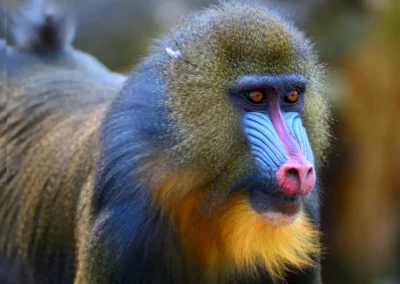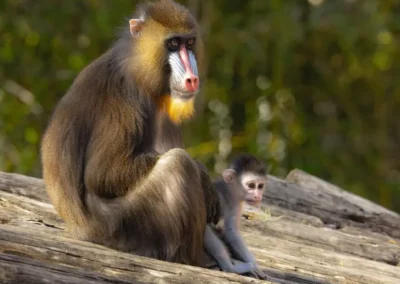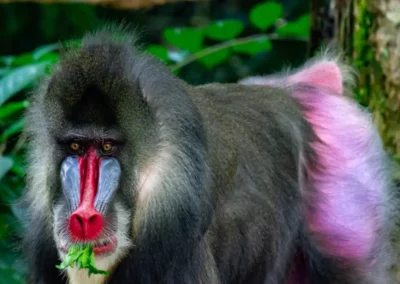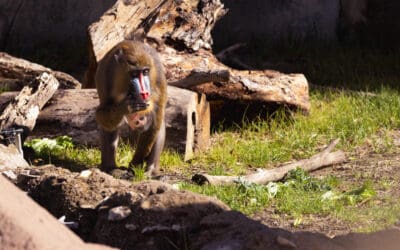Mandrill Monkey
About the Mandrill Monkey
The Mandrill Monkey (Mandrillus sphinx) is a spectacular display of nature's palette, thriving in the lush equatorial rainforests of Africa. Known as one of the largest and most vividly colored Old World monkeys, mandrills are not just a marvel of color but also a fascinating study in social structure and behavioral complexity.
Habitat
Mandrill Monkeys are native to the tropical rainforests of West Central Africa, particularly thriving in countries like Cameroon, Gabon, Equatorial Guinea, and Congo. These dense jungles provide the perfect backdrop for mandrills to exhibit their adept climbing abilities, as they are often found navigating the forest canopy with ease.
Behavior
Mandrills live in social groups known as troops, which can include hundreds of individuals, led by a dominant male. These troops exhibit complex social behaviors, including grooming, vocal communications, and a structured hierarchy that helps maintain order within the group. Despite their bold appearance, mandrills are quite shy and elusive, often retreating to the safety of the treetops.
Appearance
Mandrills are noted for their extreme sexual dimorphism, with males significantly larger than females, sometimes weighing up to 70 pounds. Their faces are perhaps their most striking feature, adorned with intense blue and red hues, complemented by a distinctive yellow beard. Not to be outdone, their brightly colored rumps, showcasing shades of red, blue, and purple, play a crucial role in mate attraction.
Diet
An omnivorous species, Mandrill Monkeys have a diverse diet that includes fruits, seeds, insects, and small vertebrates. This varied diet is crucial for their survival in the dynamic ecosystem of the rainforest, where food sources can be seasonal and scattered.
Interesting Facts
Mandrills are not only captivating due to their colors but also their dental structure; they possess elongated canine teeth, which, despite their formidable appearance, are mostly used during displays rather than for aggression. Additionally, their vibrant coloration is more pronounced in dominant males, directly correlating with hormone levels and serving as an indicator of fitness to potential mates.
Endangered Status
While not currently classified as endangered, Mandrill Monkeys face significant threats from habitat destruction, poaching, and human encroachment. Their conservation is vital as their populations are indicators of rainforest health and biodiversity. Efforts to protect their habitats are ongoing and crucial for their continued existence in the wild.
Related Content
See a Mandrill Monkey at these Events
No current events. Check back with us soon!








